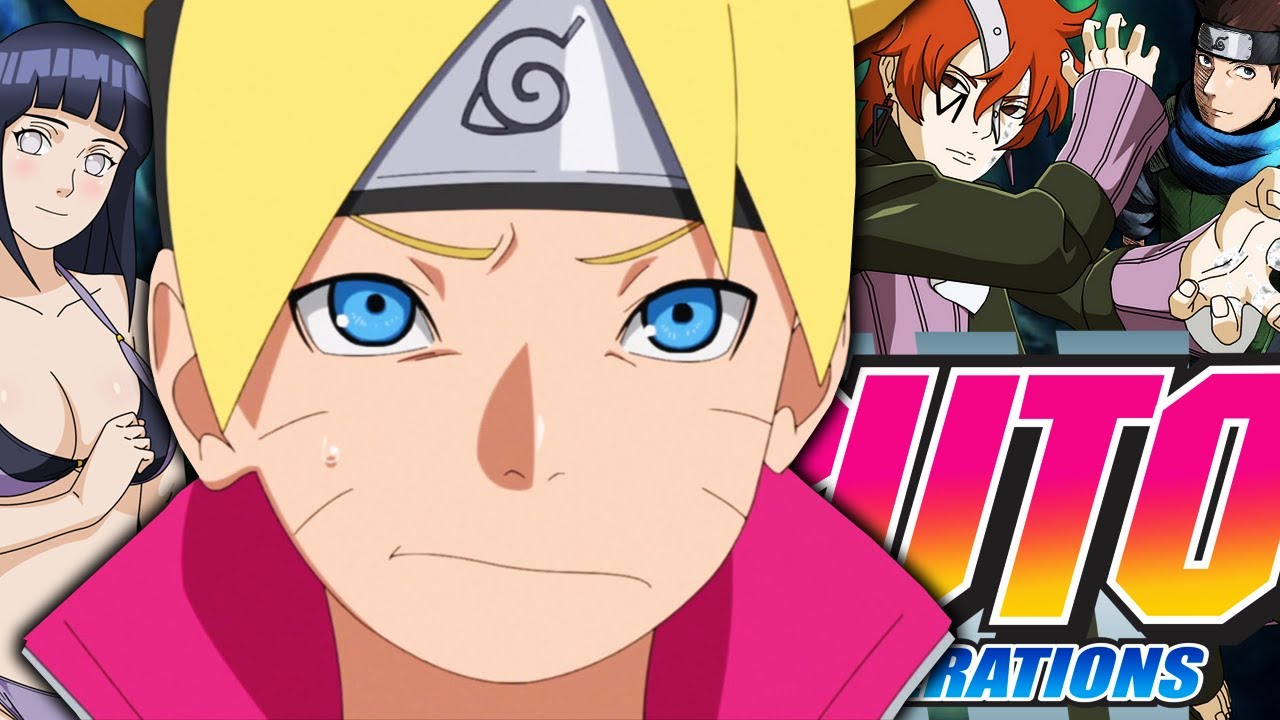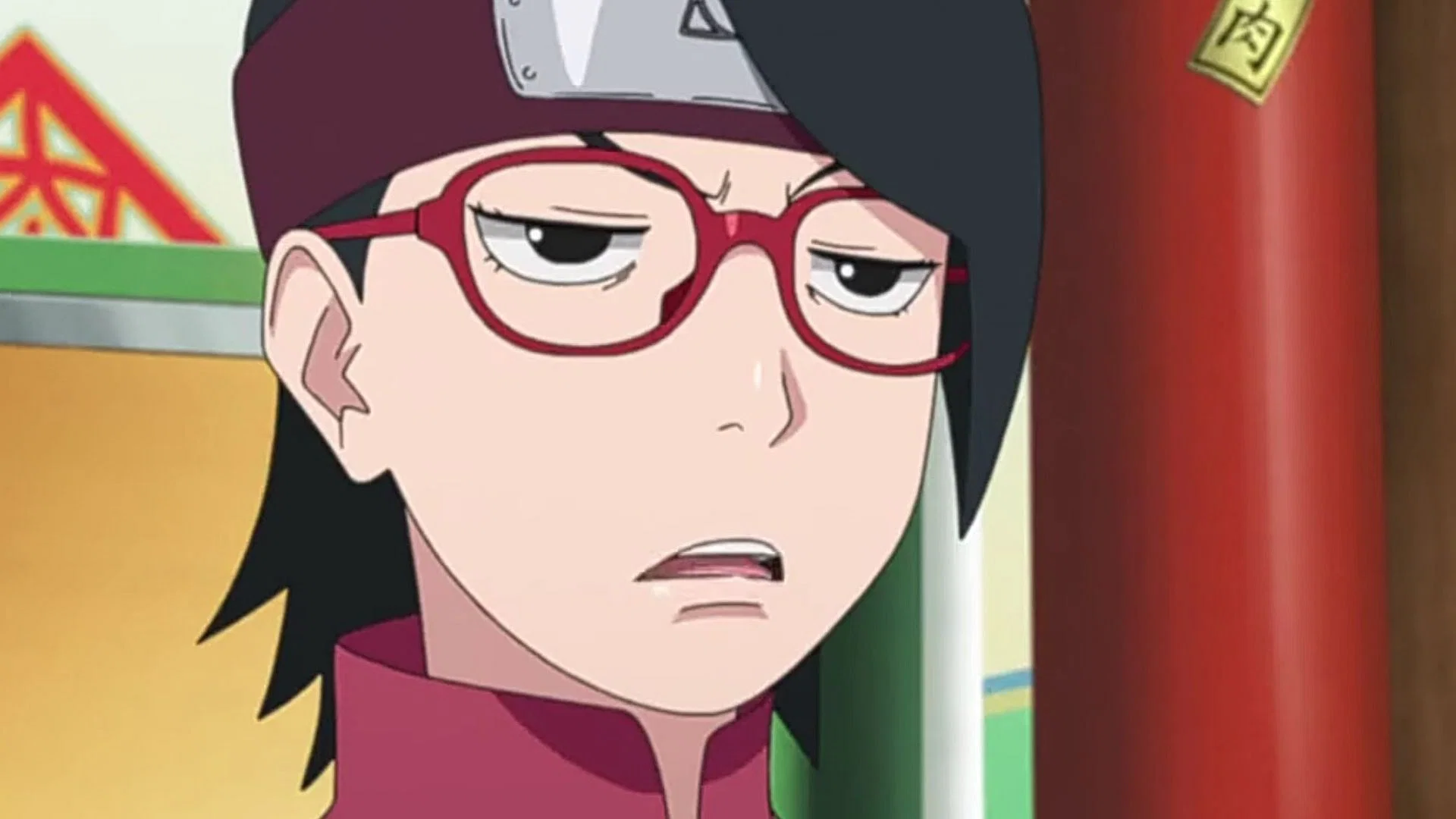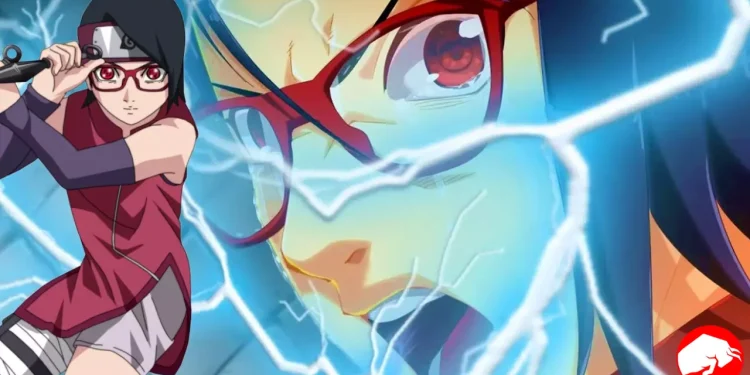The Hidden Leaf Village, under Kawaki’s dominion, is an almost unrecognizable shadow of its former self. His quest to eliminate Boruto to prevent Momoshiki’s rebirth led to a reality where Boruto seems to believe that unyielding violence is the solution. This stark contrast from the Naruto era casts a gloomy shadow over the once vibrant village.
During these turbulent times, Sarada rises as a beacon of hope. Her battle prowess in Chapter #2, “Tree,” stunned many. It wasn’t just her mastery over the Sharingan, but her blatant rejection of the traditional ninja rank system that truly set her apart.

Defying Traditions: The Rise of Sarada Uchiha
The sheer brilliance with which Sarada employed her flames and Chidori lightning blades in battle had many questioning her ‘Genin’ rank. But for Sarada, such a remark wasn’t flattering—it was derogatory.
The sentiment stems from a deeply ingrained belief that no warrior should be confined to their rank. Instead of basking in the adulation of her fellow shinobi, she calls for a radical change—breaking the rigid ninja caste system that has been the backbone of Konoha’s military structure.
This isn’t just a personal sentiment. Sarada recalls past tales of Naruto’s struggles and the unfair judgments passed on shinobi like him and Shikamaru based on a mere label. Their eventual rise to glory only solidifies her belief that the traditional ranking system is obsolete. By focusing on individual skills and talents, rather than arbitrary ranks, Sarada envisions a more inclusive and powerful Hidden Leaf Village.

Reimagining Konoha’s Military Structure
Throughout Konoha’s history, the pathway to power has been linear. Genin aspired to become Chunin and later, Jonin, with the best among them aspiring for the revered Hokage title. But Sarada questions the effectiveness of this system. When shinobi like Kawaki possess unmatched power, should they be constrained by traditional ranking norms?
Sarada’s proposition is radical but grounded in empathy and unity. She envisions a Konoha where shinobi are valued for their individual strengths and skills rather than their titles. It’s a reflection of Naruto’s own journey, who often defied the rules and carved his path.
A more open and egalitarian Konoha could potentially offer better defense against formidable foes, such as the Akatsuki and the likes of Madara and Kaguya.
Boruto: Two Blue Vortex Ch 3 promotional image in WSJ Issue No.44!
Right Text: “Cut despair into pieces with this sword!”
Left Text: “cover and opening page coloured!”
(The left text is vague and seems to be implying a coloured cover and opening page. Please take this with a… pic.twitter.com/gT76l82CjJ
— Abdul Zoldyck (@Abdul_S17) October 1, 2023
Sarada’s Vision: Echoes of Hashirama’s Legacy
Sarada’s perspective is reminiscent of Hashirama Senju, the First Hokage, who was renowned for breaking barriers and fostering inclusion. His decision to embrace the Uchiha clan and his attempts to work alongside Madara were testament to his progressive mindset. Sarada seems poised to adopt this mentality, allowing shinobi the freedom to unlock their true potential, free from the confines of rank and societal expectations.
For many young ninjas, this could mean reduced pressure and a platform to hone their skills without fear of judgment. It’s an approach that emphasizes understanding character over mere skill or rank. Sarada’s progressive vision might be the change Konoha needs to usher in a new era of peace and prosperity.
Only time will determine if Sarada’s vision becomes a reality. Yet, as the world of Boruto unfolds, it’s evident that she’s a force to be reckoned with, advocating for the greater good of all shinobi across the lands.










